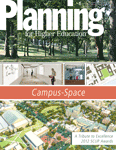- Planning Types
Planning Types
Focus Areas
-
A framework that helps you develop more effective planning processes.
- Challenges
Challenges
Discussions and resources around the unresolved pain points affecting planning in higher education—both emergent and ongoing.
Common Challenges
- Learning Resources
Learning Resources
Featured Formats
Popular Topics
- Conferences & Programs
Conferences & Programs
Upcoming Events
- Community
Community
The SCUP community opens a whole world of integrated planning resources, connections, and expertise.
Get Connected
Give Back
-
Access a world of integrated planning resources, connections, and expertise-become a member!
- Planning Types
Planning Types
Focus Areas
-
A framework that helps you develop more effective planning processes.
- Challenges
Challenges
Discussions and resources around the unresolved pain points affecting planning in higher education—both emergent and ongoing.
Common Challenges
- Learning Resources
Learning Resources
Featured Formats
Popular Topics
- Conferences & Programs
Conferences & Programs
Upcoming Events
- Community
Community
The SCUP community opens a whole world of integrated planning resources, connections, and expertise.
Get Connected
Give Back
-
Access a world of integrated planning resources, connections, and expertise-become a member!
 Planning for Higher Education Journal
Planning for Higher Education JournalResidential Common Spaces that Really Work
A Post-Occupancy Study
The most successful campus housing supports the academic development of students, but also acts as a venue for personal and social growth. So what kind of common spaces can support students whose main form of engagement happens on their smart phones? The Massachusetts State College Building Authority, which designs and constructs all of the student life facilities for the system's nine campuses, hired an architect and planner to evaluate its residential buildings and characterize the public spaces that were most successful in terms of student engagement. Attributes identified in the study—proximity, variety, "ownership," and flexible furniture, to name a few—are universally applicable in the design of engaging residential common spaces.
MEMBERS ONLY
Attention Members: Log in to access this item.Not a member? Join now to access this article and all journal articles for free.



